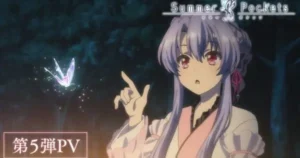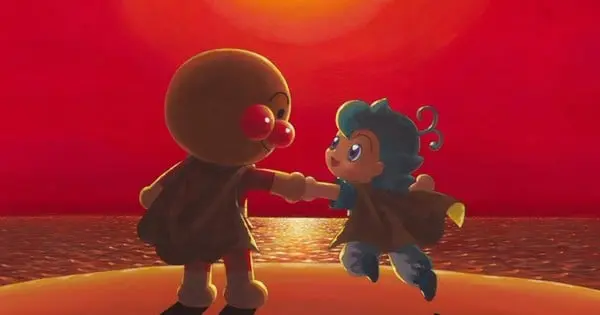The enduring appeal of the beloved Japanese children’s superhero, Anpanman, once again manifested at the domestic box office with the 2025 theatrical release of “Soreike! Anpanman: Chapon no Hero!”. The 36th film in the long-running franchise debuted at the eighth position in the Japanese box office for the weekend of June 27-29, 2025, earning 132,757,670 yen (approximately US$924,000) in its first three days. This opening performance, while not a top-tier financial debut, holds significant meaning within the unique landscape of the Japanese film industry and the sustained cultural phenomenon that is Anpanman.
The Enduring Legacy of Anpanman
Created by Takashi Yanase, the Anpanman picture book series began in 1973, quickly evolving into a cornerstone of Japanese children’s entertainment. The anime adaptation, “Soreike! Anpanman,” which commenced in October 1988, is one of Japan’s most popular and longest-running animated series, consistently introducing new characters and stories to maintain its freshness. The franchise’s impact extends far beyond television, making Anpanman a cultural juggernaut whose characters permeate nearly every imaginable children’s product in Japan, from toys and video games to clothing and snack foods. By 2013, the Anpanman franchise had generated an astonishing ¥4.5 trillion in total retail sales revenue, and by 2019, it had sold over 80 million books. Its estimated worldwide revenue reached an estimated $60 billion, solidifying its place as one of the highest-grossing anime IPs globally, second only to Pokémon according to some reports.
This deep cultural integration ensures that Anpanman films, released annually almost without fail since 1989 (with a notable exception in 2020 due to the pandemic), are eagerly anticipated events for young audiences and their families.
A Consistent Box Office Presence
Historically, Anpanman films have demonstrated consistent, if not blockbuster-level, performance at the Japanese box office. They are designed for a specific demographic—pre-elementary school-aged children—and their ticketing structure often reflects this, with lower admission fees compared to films targeting older audiences. For instance, the 2014 film, “Anpanman: Apple Boy and Everyone’s Hope,” grossed over ¥400 million (approximately $3.78 million) in Japan.
The franchise’s 35th film, “Soreike! Anpanman: Baikinman to Ehon no Lulun,” released in 2024, marked a significant milestone, becoming the highest-grossing film in the series’ history. It ranked #1 in ticket sales during its opening weekend, selling 137,000 tickets and earning 170 million yen (about US$1.05 million) in its first three days. This strong performance set a new benchmark for the franchise, highlighting its continued commercial viability and the unwavering loyalty of its target audience.
The Japanese Box Office Landscape in 2025
The Japanese film market presents a unique dynamic, heavily favoring domestic productions, especially animated features. In 2024, Japanese films accounted for a remarkable 75.3% of the total box office, setting a new record high for domestic market share. Animation, in particular, has become the leading force, with five out of the top ten highest-grossing films in 2024 being animated works. This “dependence on animation” market trend is expected to persist into 2025, with animated works continuing to dominate audience expectations.
Films like “Detective Conan: The Million-dollar Pentagram” and “Haikyu!! The Battle at the Garbage Dump” exemplify this trend, with both crossing the ¥10 billion mark in 2024. This robust performance by domestic anime creates a highly competitive environment for all releases, including established children’s franchises like Anpanman.
Decoding a Number 8 Opening
The 2025 Anpanman film, “Soreike! Anpanman: Chapon no Hero!”, opening at the eighth position on the Japanese box office charts, provides an insightful look into its performance within this competitive landscape. While a #8 ranking might seem modest compared to the chart-topping debuts of major anime blockbusters, for a children’s film like Anpanman, it signifies a healthy and expected performance given its target demographic and distribution model.
It’s crucial to consider the nuances of how Japanese box office rankings are often reported. Sometimes, rankings are based on ticket sales, and other times on gross revenue. For children’s films, the lower average ticket price (often around 1,000 yen for pre-elementary school-aged children) means they might rank higher in terms of attendance but lower in terms of overall revenue when compared to films with standard adult ticket prices (which can be 1,700 yen or more). For example, in June 2024, the Anpanman film “Baikinman to Ehon no Lulun” took first place in ticket sales but was second in weekend earnings to “Look Back” which had a higher per-ticket price.
The reported ¥132,757,670 (approx. US$924,000) earning for “Chapon no Hero!” in its opening weekend, securing the #8 spot in revenue, suggests a respectable turnout for its target audience. The presence of other films, such as “Miss Kobayashi’s Dragon Maid: A Lonely Dragon Wants to be Loved” opening at #9 and “Lupin the IIIrd The Movie: Fujimi no Ketsuzoku” at #10 in the same weekend, illustrates the diverse and active Japanese cinema market.
The Unwavering Appeal of Anpanman
The continued consistent performance of Anpanman films, even when not reaching the very top of the box office charts in terms of revenue, underscores the franchise’s unique cultural standing. Anpanman is not merely a film series; it is an institution, deeply ingrained in the lives of generations of Japanese children. Its themes of justice, kindness, and helping those in need resonate powerfully, contributing to its sustained popularity.
The regular release of new Anpanman films, like “Soreike! Anpanman: Chapon no Hero!”, serves as a cultural touchstone, often being a child’s first cinema experience. The franchise’s remarkable longevity, with the anime airing continuously since 1988 and films released almost every year since 1989, speaks volumes about its evergreen nature and ability to capture the hearts of new generations while maintaining nostalgic appeal for parents.
Even in a market increasingly dominated by high-grossing animated blockbusters, Anpanman maintains its niche and continues to demonstrate its significant influence and reliable drawing power. The #8 opening for the 2025 Anpanman film is not just a box office statistic; it is a testament to the enduring power of a beloved character in Japanese popular culture.









